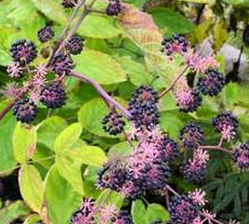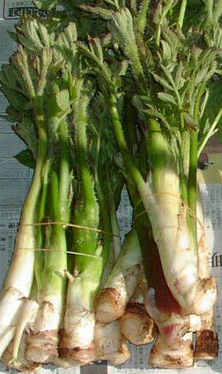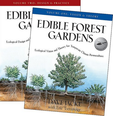 Aralia cordata, Udo Aralia cordata, Udo We can think of at least 180 great forest garden & perennial crops for cold climate Sweden. Want to hear about them? Over the course of the next year we will profile 5 a week on the blog. Perennial plants and crops offer a low energy, oil & resource input based foundation for future-proof agricultures. By default if an agriculture is to be called regenerative the bottom line is that it must be soil building, not soil depleting. Relentless deep tillage & poor soil husbandry (wifery?!) contributes to the majority of the 24 billion tons of topsoil lost every year on planet water. We are going to be focused on holistic polyculture grazing and perennial production at ridgedale over most of the site as this represents the most effective way to restore our degraded landscape, produce high value produce and ensure the future resource base we are managing holistically for in our decision making.  Genus Aralia Species cordata Common Name udo Form herb Habit clumping Origin Asia Light sun to part Moisture mesic Edible shoots Groundcover yes Nectary yes The plant yields new shoots every spring, which are blanched and then eaten as a vegetable. In Korea, the dried root of the plant has been traditionally used as medicine. The young shoots have a strong yet pleasant distinct aromatic flavor. In addition to food and medicinal use, the plant is cultivated as an ornamental. Young branched shoots can be eaten cooked or raw. They can be up to 1.5 metres long and have a mild and agreeable flavor. They are usually blanched and are crisp and tender with a unique lemon-like flavor. They can be sliced and added to salads, soups, etc. The root is sometimes used in China as a substitute for ginseng (Panax species)]. It is said to be analgesic, anti inflammatory, carminative, diuretic, febrifuge, stimulant, stomachic and tonic. The root contains an essential oil, saponins, sesquiterpenes and diterpene acids. It is used in Korea to treat the common cold and migraines. It can tolerate freezing temperatures during winter, as it dies back and then re-grows in the spring, yielding for six years or more. It requires little labor; however the shoots require blanching if intended for food use. It must be grown in a climate of minimal to no drought, and can grow well in moist and rainy areas, and mountainous areas. It is generally grown in the wild, but can be grown in fields, cellars, or nurseries. The plant prefers light shade, but can grow in full shade, or in full sun, provided that it has a reliable water source. The seed propagation requires numerous months of stratification for effective germination. Seeds generally do not germinate well directly after harvesting or in dry storage, but germinate well in cold moist sand. Low temperature treatments facilitate the germination process. Chilling treatments are useful to overcome the dormancy of seeds in dry storage. Domestic seeds germinate more effectively than wild ones. The plant propagates readily by root suckering, allowing it to produce indefinitely. OUR FRIENDS AT PFAF HAVE AN AMAZING DATABASE OF SPECIES (UK BASED); We're going to celebrate the turn of the year by giving away a free copy of both Edible Forest Gardens 1 & 2 as part of or fortnightly giveaway. These books are epic to say the least, make sure you sign up to our customizable newsletter for details... Seasons greetings!  ridgedale PERMACULTURE is Scandinavia's leading educational provider in the field of Permaculture & Regenerative Agriculture. We run regular 90hr+ P.R.I (aus) & PC Assoc (UK) certified Permaculture Design Courses as well as unique 10 week internships covering;
0 Comments
Leave a Reply. |
Details
Like us on FB Below for regular updatesStay up to date with customized updates you want to receive
Upcoming coursesArchives
December 2016
Categories
All
|

 RSS Feed
RSS Feed